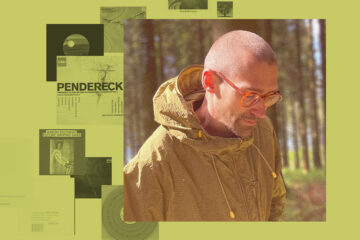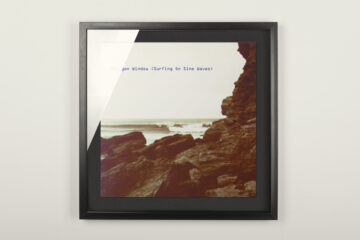In fact, everything up until that point should really have sounded like the future. Techno had promised so much, to have the future in the here and now, without any limitations and devoid of old relics. Even the synthesisers weren’t meant to sound like the past, but like tomorrow. And in the late nineties, the noise of laptops and everything digital in general represented the dominant vocabulary of music made from electricity. So where did these sounds come from that the Scottish sibling duo Boards of Canada beamed into the electronic canon on their first album »Music Has the Right to Children« from 1998?
Their melodies drifted over like echoes from by-gone days, tortured by dusty tube amplifiers. At the same time, the sounds that Michael Sandison and Marcus Eoin Sandison wielded on this record were strange and almost contaminated. ###CITI:For people who grew up with »Switched-On Bach«, Kraftwerk and Sesame Street, »Music Has the Right to Children« was like one big subliminal message:### It roused memories of things that had probably never existed before in this form. And everywhere seemed to be haunted to the gills. Restless ghosts, reluctant to find peace, wail phrases like »I love you« in a distorted computer voice, sounding less like a declaration of love and more like a veiled threat. To match, a cover depicting people, adult and small (a family?), in pale shades of green, their faces as if erased. Placeholders for real people.
Nostalgia with a future
»Music Has the Right to Children« follows a strict formula here. Analogue, melancholy synth melodies grind lazily over dragged-out breakbeats that practically anticipate all the stumbling blocks that hip hop would later trip over. It wasn’t meant for dancing. And for IDM, where they could have been positioned as artists on Warp at the time, Boards of Canada were far too unfuturistic. Neither did they want to be. Instead, they adopted a retrospective perspective that failed to yield a »retro« result, but rather music that stood out as a monolith amidst the other productions of the day.
In 1998, of course, we also had Autechre’s »LP5«, on which the duo elevated their idiosyncratic, highly artificial style in matters of solitude yet again, or »Zauberberg« from Gas, with its gloomy dark-strings-over-straight-beat ambience, both of which have long since also become classics. But Music Has the Right to Children was singularly successful in creating something new out of familiar elements which emerged in an unexpected context.
Für Menschen, die mit »Switched-On Bach«, Kraftwerk und Sesamstraße großgeworden sind, war »Music Has the Right to Children« wie eine einzige subliminale Botschaft.
Layer upon layer, the album is full of allusions to things that played an important role, particularly in the seventies. For people who grew up with »Switched-On Bach«, Kraftwerk and Sesame Street, »Music Has the Right to Children« was like one big subliminal message.
And full of mysteries as well. Starting with the title. If fact, what does the tile that even mean? How does music have children, apart from the banal circumstance that new music generally draws on its predecessors, adopts their particular features in a different way and creates thereby in the best case something that has never been heard before, but is nevertheless part of a tradition in one way or another?
Rudimentary streaks
Board of Canada also like to raise expectations that they either do not completely fulfil or do so only very late. A good example is the second track »An Eagle in Your Mind«, where the melodies initially create nothing more than a rudimentary ghosting. Hints of sounds, plus a beat that picks up again and again, but doesn’t quite feel like it wants to get off the ground. When the »real« melody and bass drum start for the first time after four minutes, it comes as a shock.
Further proof of their mastery is »Aquarius« on side two. This number makes use of the bass from the eponymous opening track from the musical »Hair« with its characteristic slapping part and the voices from a didactic Sesame Street sequence – adults and children repeatedly pronounce words like »orange« or »Yeah, that’s right!«, presumably to learn the correct use cases – without the collage sounding even remotely silly. Instead, it is one of the highlights of the happenings.
»Music Has the Right to Children« has often been praised for its many short interludes in which the synthesisers get free rein. The great thing, though, is that basically everything on it is superb. And still it doesn’t sound outdated until this day, despite or perhaps because of the lovingly patinated sounds. The nostalgia created by Boards of Canada, which others copied afterwards with pleasure and regularly, had a future.










